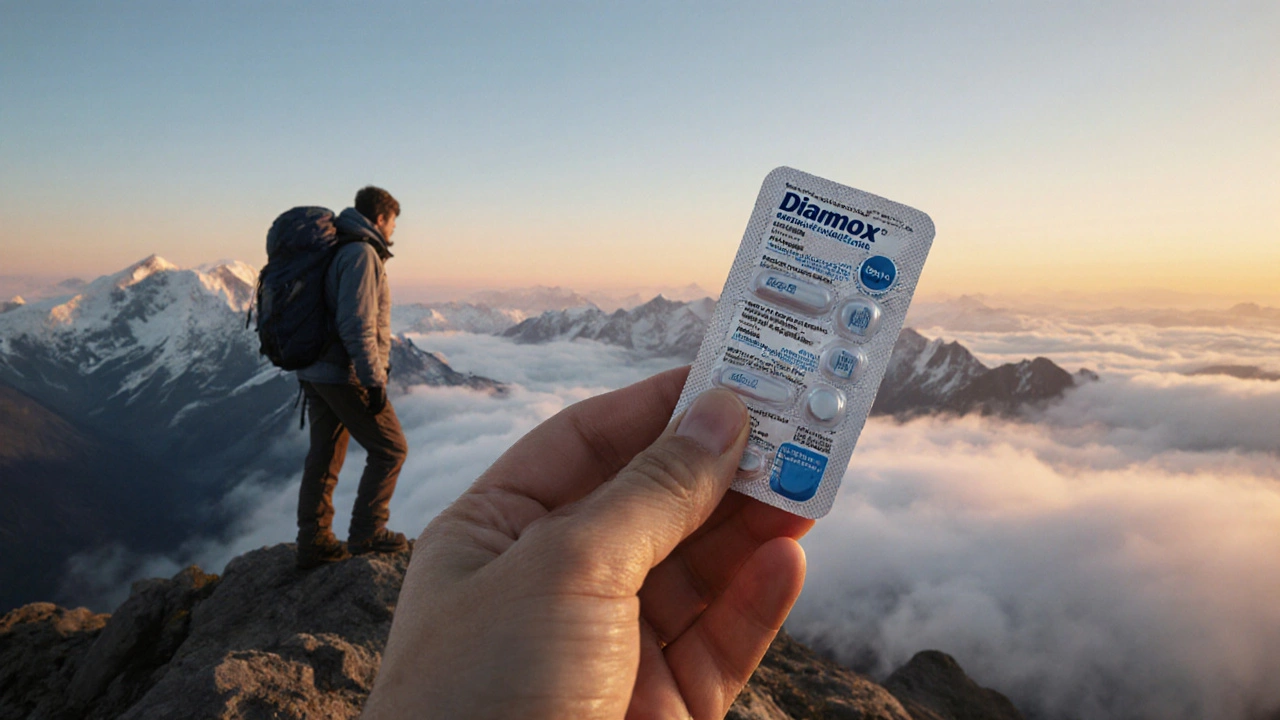Acetazolamide: Uses, Side Effects, and What You Need to Know
When you hear Acetazolamide, a carbonic anhydrase inhibitor used to treat altitude sickness, glaucoma, and some types of seizures. Also known as Diamox, it doesn't just make you pee more—it helps your body adjust to low-oxygen environments and reduces pressure in the eye and brain. This isn't a typical drug you pick up for a cold or headache. It’s a targeted tool used by climbers, glaucoma patients, and neurologists when standard treatments aren’t enough.
Acetazolamide works by blocking an enzyme called carbonic anhydrase, which changes how your kidneys handle bicarbonate and sodium. That’s why it’s a diuretic—but unlike furosemide or hydrochlorothiazide, it doesn’t just flush out water. It shifts your blood’s pH slightly, making it more acidic. That small change is what helps your body breathe deeper at high altitudes, reducing dizziness and fatigue. It’s also why doctors use it for certain seizure types: the altered pH makes brain cells less excitable. For glaucoma, it lowers fluid pressure inside the eye by reducing how much fluid the eye produces. These aren’t random uses—they’re all tied to the same core mechanism.
People often ask if Acetazolamide is safe for long-term use. The answer depends on why you’re taking it. For short-term altitude prevention, most tolerate it fine. But if you’re on it for glaucoma or epilepsy, side effects like tingling fingers, loss of appetite, or kidney stones become more relevant. It’s not for everyone—those with sulfa allergies, severe liver or kidney disease, or adrenal gland problems should avoid it. And while it’s sometimes used off-label for periodic paralysis or sleep apnea, those uses come with less evidence and more risk.
You’ll find posts here that compare Acetazolamide to other drugs used for similar conditions—like how it stacks up against dexamethasone for altitude sickness, or why it’s chosen over beta-blockers for certain glaucoma cases. You’ll also see real-world stories about people using it for climbing, managing seizures, or dealing with side effects. Some of these articles dig into how it interacts with other meds, like lithium or aspirin, which can raise the risk of toxicity. Others explain why some patients feel better on it while others can’t tolerate even a low dose.
There’s no one-size-fits-all with Acetazolamide. It’s not a miracle drug, but when used right, it can be life-changing—for someone summiting Kilimanjaro, someone avoiding vision loss from glaucoma, or someone whose seizures finally come under control. What you’ll find below isn’t just a list of articles. It’s a practical guide to understanding when this drug makes sense, when it doesn’t, and how to use it safely.






